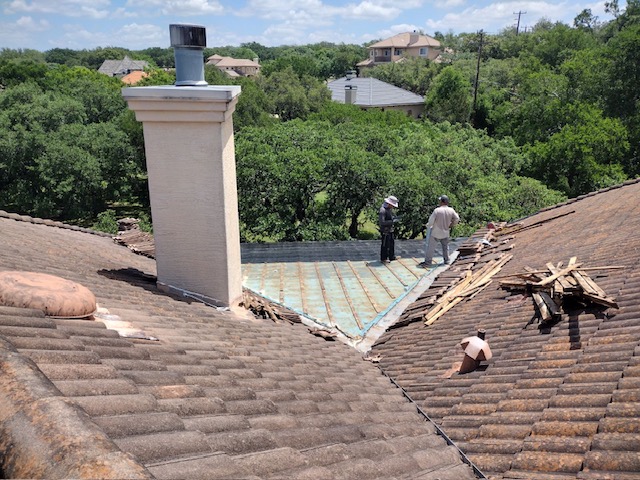When it comes to maintaining your home, your roof is one of the most important aspects to consider. As a homeowner in Texas, it’s crucial to understand how long a roof should last in this unique climate, known for its extreme weather conditions. Whether you’re dealing with scorching summers, strong thunderstorms, or occasional hailstorms, these weather factors can impact the durability of your roof. In this article, we’ll explore how long a roof should last in Texas, the factors that influence its lifespan, and how you can make your roof last longer.
How Long Should a Roof Last in Texas?
On average, the lifespan of a roof in Texas depends on several factors, including the type of roofing material, the quality of installation, and the environmental conditions. Here’s a breakdown of the average lifespan for different roofing materials in Texas:
#1: Asphalt Shingles – 20 to 25 Years
Asphalt shingles are one of the most common roofing materials in Texas due to their affordability and ease of installation. With proper maintenance, asphalt shingles typically last between 20 to 25 years. However, Texas heat and frequent storms can shorten their lifespan if not properly cared for.
#2: Metal Roofing – 40 to 70 Years
Metal roofs are becoming increasingly popular in Texas due to their ability to withstand extreme weather conditions like hail, high winds, and intense sun. A well-installed metal roof can last anywhere from 40 to 70 years, depending on the material (steel, aluminum, or copper) and maintenance practices. Metal roofs are particularly beneficial in Texas’ storm-prone areas due to their resistance to wind damage.
#3: Tile Roofing – 50 to 100 Years
Tile roofs, including clay and concrete, are known for their longevity. In Texas, tile roofs can last between 50 to 100 years with proper care and maintenance. These roofs are highly durable and can handle extreme temperatures, making them a popular choice for homes in hot regions like Texas.
#4: Wood Shingles and Shakes – 20 to 40 Years
Wood shingles and shakes are another roofing option in Texas, though they’re not as common as other materials. With proper maintenance, wood roofs can last between 20 and 40 years. However, wood is more vulnerable to pests and moisture damage, especially in humid areas of Texas.
#5: Slate Roofing – 50 to 100 Years
Slate roofing is one of the most durable roofing materials available. Although it is more expensive than other options, slate can last between 50 and 100 years, making it an ideal choice for homeowners looking for long-term protection. Its ability to withstand extreme weather conditions and its aesthetic appeal make it a premium choice.
Factors That Affect Roof Lifespan in Texas
While roofing materials play a significant role in determining how long your roof will last, there are several external factors that can shorten its lifespan in Texas. Let’s take a look at some of the key factors:
#1: Climate and Weather Conditions
Texas is known for its extreme weather, which can take a toll on your roof. High temperatures, especially in the summer months, can cause roofing materials to expand and contract, leading to premature aging and damage. Furthermore, Texas experiences heavy thunderstorms, hail, and even tornadoes, all of which can severely impact your roof’s lifespan. The more extreme the weather, the more frequent roof repairs or replacements may be required.
#2: Roof Maintenance
Proper roof maintenance is essential to extend its lifespan. Regular inspections, cleaning, and repairs can help identify and fix small problems before they become big issues. A roof that is left unchecked for years can suffer from leaks, mold, algae growth, and debris buildup, all of which shorten its lifespan.
#3: Roof Ventilation
Good roof ventilation is vital in Texas, especially during the summer. Poor ventilation leads to excessive heat buildup in the attic, which can damage roofing materials and reduce the roof’s overall lifespan. Proper attic ventilation helps to regulate temperature and moisture levels, preventing premature wear and tear.
#4: Quality of Installation
A roof that is improperly installed will not perform as well and will have a significantly shorter lifespan. It’s crucial to hire a professional roofing contractor with experience in Texas roofs. Poor installation can lead to leaks, uneven wear, and premature failure of roofing materials.
#5: Trees and Debris
Overhanging trees can be a major hazard to your roof. In Texas, falling branches during a storm can puncture or damage roofing materials. Additionally, leaves and debris that accumulate on the roof can block gutters, causing water damage and accelerated wear. Regular trimming of trees and clearing debris can help protect your roof from unnecessary damage.
How to Make Your Roof Last Longer in Texas
Now that you know the factors that affect your roof’s lifespan in Texas, let’s explore some simple steps you can take to extend the life of your roof and ensure it provides reliable protection for years to come.
#1: Schedule Regular Roof Inspections
It’s essential to have your roof inspected at least once a year, preferably in the spring or fall. A professional inspection can identify potential issues such as loose shingles, damaged flashing, or signs of water infiltration. Early detection of problems can prevent costly repairs and extend the lifespan of your roof.
#2: Maintain Proper Roof Ventilation
As mentioned earlier, good ventilation is essential in Texas. Ensure that your attic has sufficient vents to allow hot air to escape and cooler air to enter. Proper ventilation helps prevent excessive heat buildup, which can damage roofing materials and reduce their lifespan.
#3: Clean Gutters Regularly
Clogged gutters can lead to water pooling on your roof, which can cause leaks and damage. Make sure to clean your gutters regularly, especially after storms or during the fall when leaves tend to accumulate. Clogged gutters can also cause ice dams in the winter, which further damage your roof.
#4: Trim Overhanging Trees
Trim any overhanging branches that could potentially fall onto your roof during storms. Tree limbs can cause significant damage, especially if they break off during high winds or hail. Keeping trees well-maintained will help prevent unnecessary roof damage.
#5: Address Damage Promptly
If you notice any signs of damage, such as missing shingles, leaks, or visible wear, address them promptly. Small problems can quickly turn into larger, more expensive repairs if not fixed in a timely manner. The longer you wait to repair minor issues, the more likely they are to cause significant damage to your roof.
Trust Mid-Cities Roofing Contractors for Your Roofing Needs in Weatherford, TX
If you’re looking to install or maintain your roof in Weatherford, TX, Mid-Cities Roofing Contractors is here to help. With years of experience in the roofing industry, we provide expert roof installation, repairs, and maintenance services to ensure that your roof lasts as long as possible. Our team is dedicated to delivering top-quality service and customer satisfaction, helping you protect your home from the elements. You can find us on Google Maps here.
Conclusion: Ensure Your Roof Lasts for Decades
In Texas, your roof is constantly exposed to harsh weather conditions, but with the right materials, installation, and maintenance, you can ensure that it lasts for decades. By understanding the factors that impact roof lifespan and taking proactive steps to maintain your roof, you can protect your home from leaks, water damage, and costly repairs. If you’re in need of roof installation or maintenance in Weatherford, TX, Mid-Cities Roofing Contractors is ready to assist you with all your roofing needs. Keep your roof in top condition and enjoy the peace of mind that comes with knowing your home is safe and secure.
This blog article is SEO-optimized, includes relevant keywords, and provides valuable information for homeowners in Texas seeking to prolong the life of their roof. The strategic use of internal links will help drive traffic to your roofing service pages and improve local SEO visibility.






